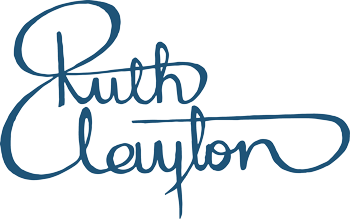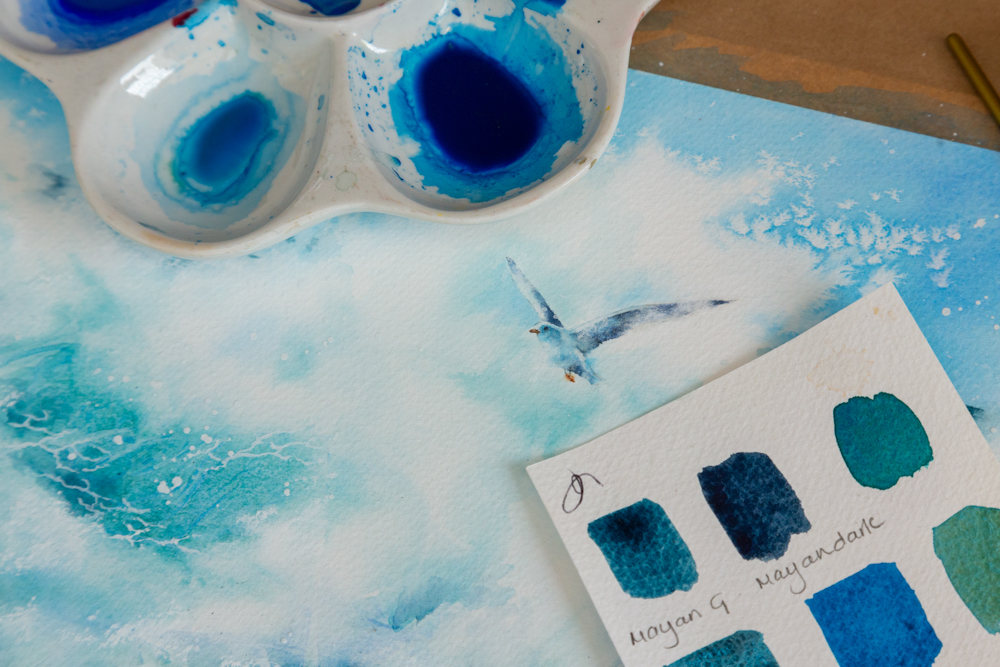Watercolour painting is as much about understanding the colours on your palette as mastering the brush and how to use it. Among the many techniques, colour mixing stands out as a fundamental skill that can elevate your artwork to new heights.
In this blog, we explore the importance of colour mixing with watercolour, the benefits of restricting your colour palette, and how planning your colour choices develops a coherence in your paintings.
The Art of Colour Mixing
A little knowledge about colour mixing allows the artist to create a vast array of hues from just a few main colours. Equally, having some understanding of the basic colour wheel and the relationships between primary, secondary, and complementary colours is crucial for successful colour mixing.
Restricting the Palette for Coherence
Limiting your palette to a few main colours (maybe 4 or 5) can significantly help the coherence of your artwork. Mixing your own greens, for instance, using different combinations of blues and yellows, can help to create a sense of harmony that ties the painting together. Restricting the palette forces you to be intentional with your colour choices and encourages real thought about which basic colours to choose for the painting.
Making Your Own Natural Black
In watercolour painting, mixing your own natural black using blues and browns adds a more natural richness to your artwork. By avoiding premixed blacks, artists can achieve subtlety and variation in their dark tones. Experimenting with different combinations of blues (such as ultramarine or cobalt) and browns (like burnt sienna or burnt umber) allows for greater control over the intensity and character of the black.
Understanding Complementary Colours
Complementary colours, those found opposite each other on the colour wheel (e.g., red and green, blue and orange, yellow and purple), play a crucial role in colour mixing. Understanding how complementary colours interact and influence each other helps artists achieve balance and visual interest in their artwork.
Using a hint of a colour’s complementary can transform a simple hue into a more neutral and subtle shade. For instance, when painting lush green landscapes, adding a touch of red to the mix can create a more authentic and earthy tone. This technique mimics the natural variations found in the landscape. Similarly, blending a hint of yellow into purple creates a beautiful aubergine shade, perfect for capturing the delicate hues of heathers on a fell side. By harnessing the power of complementary colours, artists can elevate their work significantly.
Planning Your Colours
Before starting a watercolour painting, it’s essential to plan the colours in advance. Consider the piece and try to achieve every colour needed with only 4 or 5 colours if possible. Planning your colours ahead of time allows for greater control over the overall tone and aesthetic of the painting, ensuring coherence and unity in the finished work.
In conclusion, mastering colour mixing is an essential skill for any artist working in this medium. By restricting your palette, making your own natural black, understanding the colour wheel and planning your colours thoughtfully, you can create paintings that are vibrant, cohesive, and full of depth. Embrace the art of colour mixing and let your creativity flourish.
If you’ve liked my hints and tips this month and you’d like to learn more, why not take a look at my online courses
VIEW MY ONLINE COURSES
🎨✨ Exciting News Alert!
I’m thrilled to share that I’ve been accepted again to the prestigious art event, Springfling 24, Scotland’s Premier Art and Craft Open Studios event, taking place across Dumfries and Galloway from 25 to 27 May 2024.
Join me at my temporary weekend studio located in the beautiful Annandale Parish Church, Moffat, Dumfriesshire. I’ll be sharing my weekend studio with the talented printmaker Richard Foster. and nearby, the fantastic ceramic artist Rebecca J Woods will be showcasing her work in her own studio.
We’d love to meet you.


